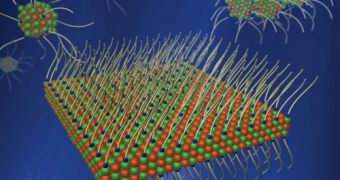The human heart is a mystery from many points of view. It produces a complex electrical field all on its own, and is the only muscle in the body that never takes a break from its chores. It comprises an intricate web of various types of cells, which all work together to keep the heart beating. Scientists have for many years been interested in the way cells develop from the embryonic stage of complex organisms into the structures commonly encountered in their hearts. Now, experts at the University of California in Berkeley (UCB) make new headway in this field of research.
In a recent set of experiments they conducted on the model organism known as Ciona intestinalis, the team may have found the origins of the second heart field in vertebrates. This particular creature is also known as the sea squirt, and researchers believe it represents on important stop on the evolutionary line between chordates and more complex organisms, including humans. The squirts share no less than 80 percent of their entire genetic material with humans, a fact that has been established after its genome has been sequenced entirely. The creature itself looks like a bag of gelatin.
Hearts in all vertebrate creatures are primarily made out of two distinct cell populations, which are called the first heart field and the second heart field, respectively. The left ventricle, the right ventricle and outflow tract of the heart are derived from these fields, and numerous studies have interestingly linked cells from the second heart field to muscle cells in the lower jaw of birds and mammals. “The heart-jaw connection is evolutionarily ancient. We think the sea squirt is valuable as a developmental model to study these connections because it is a simple chordate that is the closest living relative of vertebrates, including humans,” says Mike Levine, a developmental biologist at the UCB.
In their studies of Ciona, the experts looked at the movement of specific cells during embryonic development. They noticed that heart progenitor cells were responsible for the development of atrial siphon muscles. These are essential for the organism, as it uses them to expel water out of its body, during the feeding process. It may be, the team believes, that the siphon is the equivalent of the lower jaw in mammals and birds. This means that the intricate hearts seen in higher vertebrates such as humans were made possible by a re-routing of jaw cells into the developing heart.
“This is an exciting discovery, because we still don't know the rules for evolving novelty. We understand how you lose things via evolution, but we really don't understand how you make something more complex,” Levine concludes, quoted by the US National Science Foundation (NSF).

 14 DAY TRIAL //
14 DAY TRIAL //